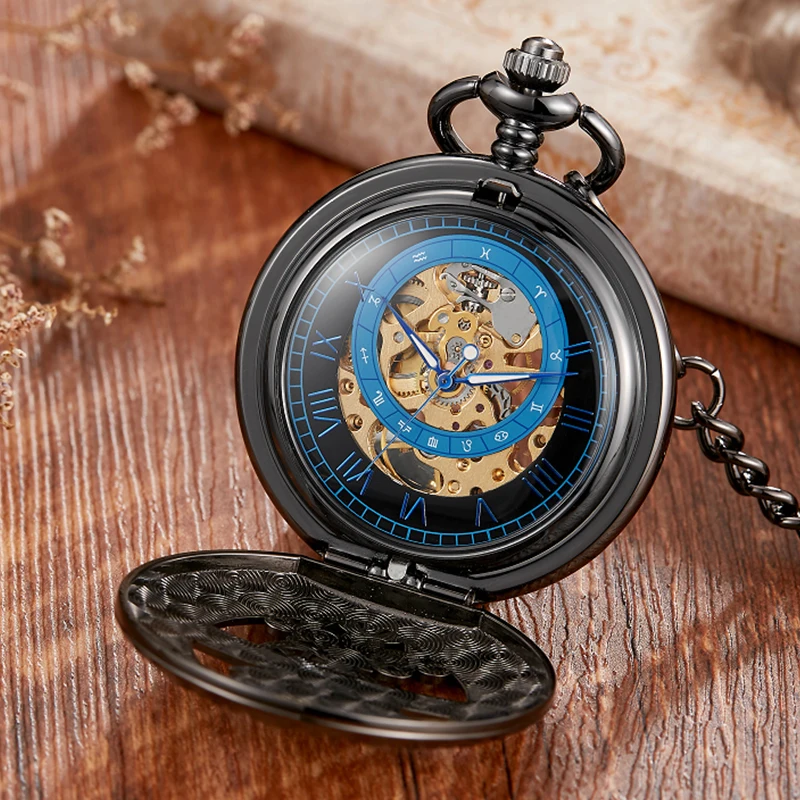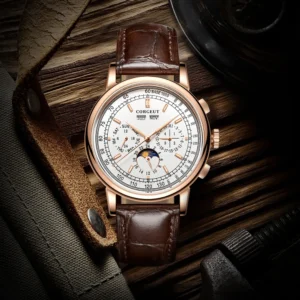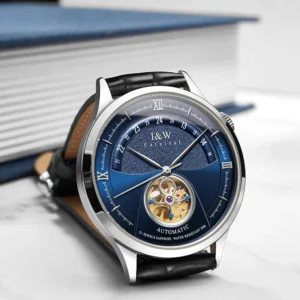Understanding the Moonphase Complication: A Window to Celestial Mechanics
A moonphase complication is a specialized feature in watches that tracks and displays the current phase of the moon as it appears in the sky. Unlike simpler watch functions like date displays, a moonphase complication represents something profound—the mechanical translation of celestial movements onto your wrist.
At its core, the mechanism works through a carefully designed system of gears connected to the main timekeeping components of the watch. These gears drive a rotating disk decorated with two moon faces, which slowly advances behind an aperture on the watch dial. As the disk rotates, different portions of the moon become visible through the window, mimicking the waxing and waning of the moon in the night sky.
The visual presentation typically features a blue disk representing the night sky, with golden or silver moons that peek through the display window. This aesthetic has remained remarkably consistent since the earliest pocket watches featuring moonphase displays.
The development of moonphase complications shares fascinating parallels with the history of dive watch engineering, representing humanity’s enduring desire to track and understand natural cycles through mechanical means.
What makes moonphase accuracy particularly significant is that it represents one of horology’s most poetic challenges—translating an irregular astronomical cycle into the precise, orderly world of gears and springs. The accuracy of this translation varies dramatically between watches, creating a spectrum of precision that reflects both the limitations and triumphs of mechanical engineering.
For those interested in the mechanical principles behind these displays, understanding how moonphase complications work reveals the ingenious solutions watchmakers have developed to address this horological challenge.
The Celestial Reality: Understanding the Lunar Cycle
Before appreciating the achievement of an accurate moonphase display, we must understand what it’s attempting to track. The synodic month—the time between successive new moons—lasts exactly 29.53059 days, or more precisely, 29 days, 12 hours, 44 minutes, and 2.8 seconds.
This irregular number presents the fundamental challenge for watchmakers. Mechanical systems function best with clean, whole-number ratios, but the lunar cycle refuses such convenient mathematics. When creating a mechanical representation of this cycle, watchmakers must find a practical approximation that balances accuracy with engineering feasibility.
The unavoidable gap between the actual lunar cycle and its mechanical representation creates a deviation—a gradual drift away from the true position of the moon. This deviation forms the foundation of how we measure moonphase accuracy. The closer a mechanism can approximate the true 29.53059-day cycle, the longer it will take for the displayed moon to noticeably differ from the actual moon in the sky.
The complex relationship between astronomical cycles and their mechanical representations in watches is a fascinating subject explored in greater detail in our article on how moonphase watches track lunar cycles.
The Mathematics of Precision: How Moonphase Accuracy is Measured
When we discuss moonphase accuracy, we measure it in a very specific way: how long it takes for the display to be off by one full day from the actual moon in the sky.
Watch accuracy is typically expressed as “1 day of error per X years.” This means that after X years of continuous running (assuming the watch never stops), the moonphase display will be approximately one full day ahead or behind the actual moon phase.
Watchmakers calculate this accuracy using relatively straightforward mathematics. Since we know the true lunar cycle is 29.53059 days, we can compare this to the mechanical approximation created by the gear system. The smaller the difference between these values, the more accurate the moonphase.
For example, if a mechanical system approximates the lunar month as 29.53 days, there’s a difference of 0.00059 days per lunar cycle. To find how long it takes for this small difference to accumulate to a full day of error, we divide 1 day by 0.00059 days/cycle, which gives us approximately 1,695 lunar cycles. Converting this to years (by multiplying by 29.53059 and dividing by 365.25) tells us when the complication will be off by one day.
This accumulated error is what distinguishes the different levels of moonphase accuracy we’ll explore in the following sections.
Standard Moonphase Accuracy: The Classic 59-Tooth System
The most common moonphase mechanism found in watches uses what’s known as a 59-tooth gear system. This standard approach has been used in watchmaking for centuries and provides a practical, if imperfect, representation of the lunar cycle.
The system gets its name from a wheel with 59 teeth, which makes one full rotation every 59 days. Since this wheel advances one tooth per day, and there are two identical moon images on the disk connected to this wheel, each moon image represents 29.5 days (59 ÷ 2). This approximation of the lunar cycle as 29.5 days is remarkably close to the actual 29.53059 days.
However, the slight difference between 29.5 and 29.53059 days means that the standard moonphase accumulates an error of approximately 0.03059 days per lunar month. This seemingly tiny discrepancy adds up over time, resulting in a deviation of one full day approximately every 2 years and 7 months (or about 31 months).
For the watch owner, this means that a standard moonphase display requires adjustment roughly once every 2.5 years to keep it accurately aligned with the actual lunar phases. While this may seem frequent, it’s often aligned with other routine maintenance intervals for mechanical watches.
The mechanical moonphase vs astronomical accuracy debate centers largely on whether this level of precision is sufficient for a luxury timepiece, especially when more accurate alternatives exist.
Enhanced Precision: The 135-Tooth Moonphase System
A significant improvement over the standard system is the 135-tooth moonphase mechanism. This more sophisticated approach uses a wheel with 135 teeth rather than 59, driving a disk that still displays two moon images.
The mathematical improvement is substantial. With 135 teeth controlling two moons, each lunar month is represented as 67.5 days ÷ 2 = 29.525 days. Compared to the actual 29.53059-day lunar cycle, the error is reduced to just 0.00559 days per cycle—approximately 5.4 times more accurate than the standard system.
This improved approximation means the moonphase display will accumulate one day of error only after about 122.5 years of continuous operation. For all practical purposes, this level of accuracy means that most owners will never need to adjust their moonphase display due to accumulated error during their lifetime.
The 135-tooth system represents a sweet spot in the balance between accuracy and mechanical complexity, making it popular in mid-to-high-end luxury watches where precision beyond the standard is expected, but the ultimate astronomical accuracy isn’t necessary.
Astronomical Precision: Ultra-Accurate Moonphase Complications
The pinnacle of moonphase engineering lies in what horologists call “astronomical” moonphase complications. These ultra-accurate mechanisms achieve precision measured not in years or decades, but in centuries.
These extraordinary systems employ increasingly complex gear trains to more closely approximate the true lunar cycle. One approach uses a 185-tooth wheel that creates an approximation of 29.53 days—accurate to one day in 553 years. Even more impressive are systems using 295-tooth wheels that deviate by just one day in 1,027 years.
Some of the most sophisticated mechanisms achieve mind-boggling precision through multi-stage gear reductions. These can involve several interconnected wheels with precisely calculated tooth counts, creating approximations so close to the actual lunar cycle that they deviate by only one day in several thousand years.
The engineering challenges of creating such precise mechanisms are considerable. Each tooth must be perfectly formed, as even microscopic manufacturing variations can affect long-term accuracy. The gears must also be incredibly small to fit within the confined space of a wristwatch case, yet robust enough to function reliably for decades.
While these astronomical moonphases represent horological marvels, their practical benefit is more philosophical than functional. The longevity of these displays relates interestingly to questions about how long automatic watches last, creating a fascinating contrast between the theoretical precision of the mechanism and the practical lifespan of the watch itself.
For collectors interested in how moonphases work alongside other time-tracking features, exploring mechanical watch calendar complications provides valuable context on how these systems interact.
Engineering Excellence: Factors Determining Moonphase Accuracy
While gear ratios play the most visible role in determining moonphase accuracy, three key factors ultimately influence how precisely a watch can track the lunar cycle:
Gear Train Design and Tooth Count: As we’ve explored, the number of teeth and arrangement of the wheels directly determines the mathematical approximation of the lunar cycle. More sophisticated gear trains can achieve closer approximations.
Manufacturing Precision and Tolerances: Even the most theoretically accurate gear system will fall short if manufacturing isn’t precise. The teeth must be perfectly shaped and spaced, and the gear pivots must have minimal play. A wheel with 295 teeth requires extraordinary manufacturing precision for each tiny tooth.
Mathematical Model Used: Watchmakers must choose which mathematical approximation of the lunar cycle to implement. The true synodic month isn’t a static value—it actually varies slightly over time due to celestial mechanics. Some ultra-precise complications account for these variations.
These factors interact in complex ways. A theoretically perfect gear ratio manufactured poorly will underperform compared to a slightly less perfect ratio executed with exceptional precision. Similarly, the mathematical model chosen must balance theoretical accuracy with practical engineering constraints.
This explains why two moonphase complications with identical tooth counts might display slightly different long-term accuracy—the devil truly is in the details.
The Limitations of Mechanical Astronomy: Perfect Accuracy’s Elusive Nature
Despite the remarkable achievements in moonphase engineering, perfect accuracy remains mathematically impossible through purely mechanical means. This isn’t a failure of watchmaking—it’s a fascinating limitation imposed by the nature of numbers themselves.
The lunar cycle’s length (29.53059 days) is what mathematicians call an irrational number—it cannot be perfectly expressed as a ratio of two whole numbers. Mechanical gearing, however, can only create rational ratios. No matter how many teeth we add to the wheels, we can only ever approximate the true value, never match it exactly.
This creates an interesting philosophical dimension to moonphase complications. They represent humanity’s attempt to capture natural perfection through mechanical means, knowing the pursuit is asymptotic—always approaching but never reaching perfect accuracy.
Even the most precise astronomical moonphases with accuracy measured in millennia will eventually drift away from the actual moon. There’s something poetically humbling in this realization—our finest mechanical creations can mirror nature’s rhythms with extraordinary precision, but perfect synchronization remains forever just beyond reach.
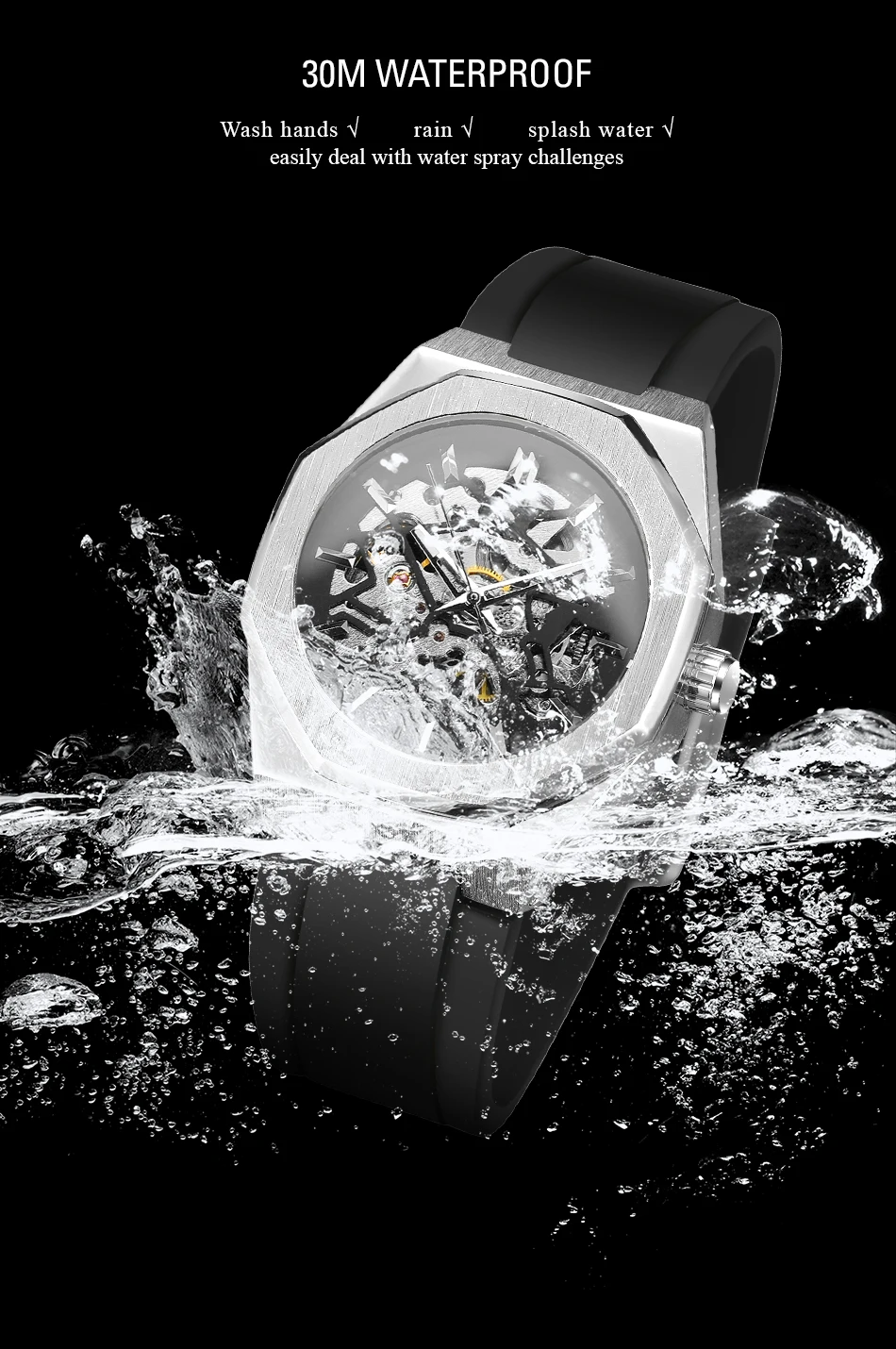
Practical Ownership: Setting and Maintaining Your Moonphase Complication
Despite their varying levels of theoretical accuracy, all moonphase watches share one practical reality—they need to be correctly set and occasionally maintained to provide accurate information.
Setting a moonphase properly requires knowing the current phase of the moon. This can be determined through weather apps, astronomical websites, or simply by looking at the night sky. Most moonphase watches are adjusted using a pusher or through the crown system, with each click advancing the display by one day.
For watches with standard 59-tooth systems, expect to adjust the display every 2-3 years if you want to maintain perfect alignment with the actual moon. Watches with enhanced precision (135-tooth systems) generally won’t require adjustment within a normal ownership timeframe unless the watch has stopped for an extended period.
When setting your moonphase display, it’s best to start from a known position—usually the full moon or new moon, as these are easiest to identify precisely. Count the days since the last full moon and advance the display accordingly.
If your watch has stopped running for some time, resetting the moonphase should be part of your regular winding routine. Many collectors find this interaction with their timepiece to be a satisfying ritual that connects them to both the mechanical art of watchmaking and the celestial rhythms the complication tracks.
Remember that even the most accurate moonphase is only as precise as its initial setting—a poorly set ultra-accurate moonphase will still show incorrect information.
Exceptional Examples: Notable Achievements in Moonphase Engineering
The world of moonphase complications spans a remarkable spectrum of engineering achievements, from practical standard systems to mechanical marvels pushing the boundaries of what’s possible.
In the realm of standard precision, watchmakers have found creative ways to enhance the visual impact of the traditional 59-tooth system. Some designs feature extraordinarily detailed moon faces with texture and depth that catch light dramatically. Others incorporate luminous material that glows at night, echoing the actual moon’s behavior.
High-precision moonphases (those accurate to 100+ years) often display their sophistication through more complex displays. Some feature larger apertures showing more of the lunar disk, while others incorporate additional indicators for lunar latitude or the age of the moon in days.
The most astronomically precise moonphases (accurate to 1,000+ years) represent the pinnacle of horological engineering. These mechanisms sometimes display the moon from both northern and southern hemispheres simultaneously or incorporate additional astronomical functions like solar cycles or eclipse predictions.
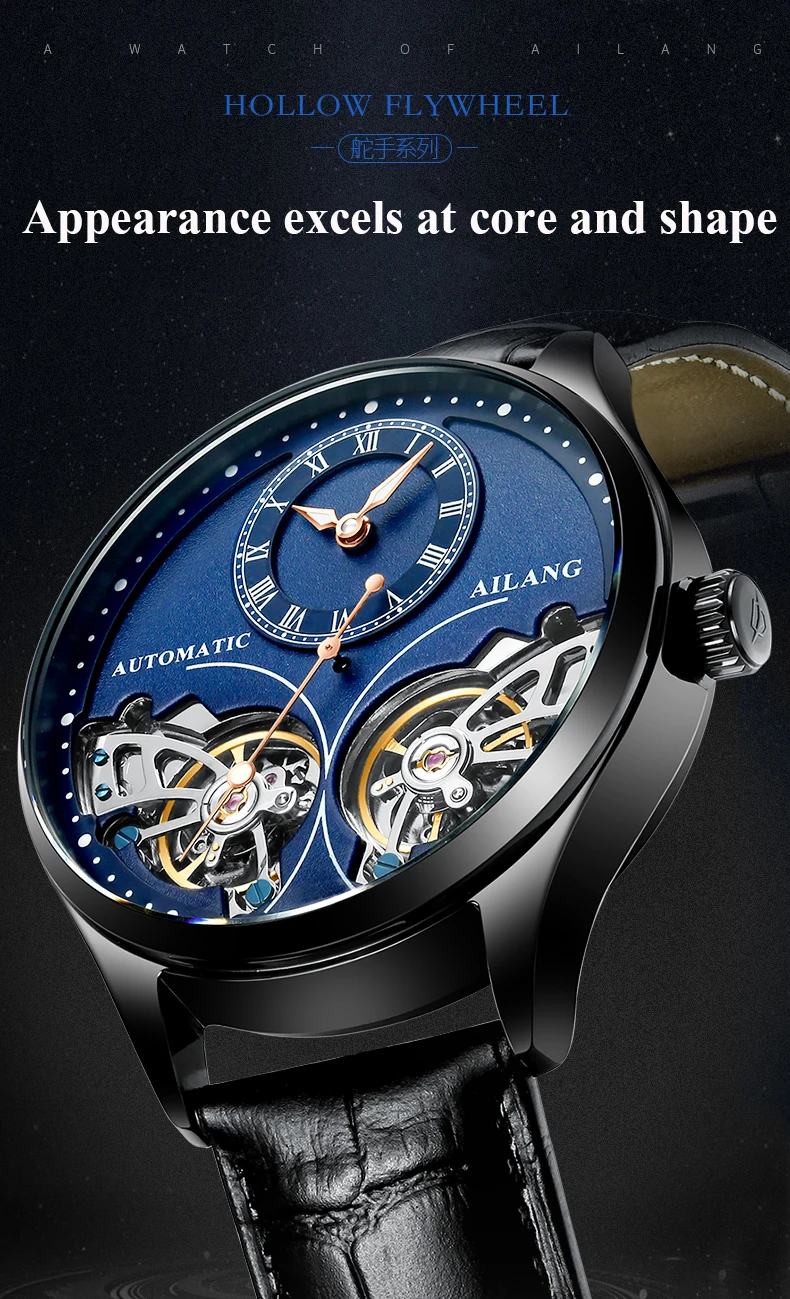
For collectors interested in exploring different implementations, our collection of moonphase automatic watches showcases various approaches to this fascinating complication.
Many of the most impressive moonphase displays appear alongside other sophisticated complications, particularly in perpetual calendar automatic watches, where the lunar display complements the calendar’s long-term tracking capabilities.
Classic Automatic Dress Watches, Day Date Automatic Watches, Perpetual Calendar Automatic Watches
Price range: $540.60 through $574.60 Select options This product has multiple variants. The options may be chosen on the product pageAutomatic Skeleton Watches, Open Heart Automatic Watches
$98.36 Select options This product has multiple variants. The options may be chosen on the product page- $480.96 Select options This product has multiple variants. The options may be chosen on the product page
Classic Automatic Dress Watches, Day Date Automatic Watches, Moonphase Automatic Watches, Perpetual Calendar Automatic Watches
Price range: $409.44 through $432.79 Select options This product has multiple variants. The options may be chosen on the product pageClassic Automatic Dress Watches, Moonphase Automatic Watches, Open Heart Automatic Watches
$192.99 Select options This product has multiple variants. The options may be chosen on the product pageAutomatic Skeleton Watches, Classic Automatic Dress Watches, Mechanical Skeleton Watches, Open Heart Automatic Watches
Price range: $411.33 through $422.65 Select options This product has multiple variants. The options may be chosen on the product page
The Enduring Romance: Why Moonphase Accuracy Matters to Enthusiasts
Beyond the technical specifications and engineering feats, moonphase complications hold a special place in horology because they connect us to something greater than timekeeping itself—the rhythm of the cosmos.
Watch enthusiasts value high precision in moonphase complications not merely as a demonstration of technical prowess, but as a testament to watchmaking’s highest aspiration: creating mechanical art that harmonizes with natural cycles. There’s something profound about wearing an instrument that tracks both the minutes of your day and the ancient rhythm of the moon that has guided humanity for millennia.
The enduring allure of moonphase complications stems from this unique position at the intersection of science, art, and philosophy. A moonphase watch is simultaneously a scientific instrument, an artistic representation of celestial movements, and a philosophical statement about humanity’s relationship with time.
Different watchmakers approach the visual interpretation of the moonphase in distinct ways, from scientifically accurate representations to artistic stylizations. These various moonphase displays in horology showcase not just technical differences but cultural and artistic ones as well.
For many collectors, the appeal of fine mechanical watches like those featuring open heart automatic movements shares common ground with moonphase complications—both reveal the beating heart of mechanical art, whether through visible balance wheels or celestial tracking.
In the end, a moonphase complication—regardless of its specific accuracy level—serves as a constant reminder on the wrist that we exist within greater cycles of time than just the hours and minutes of our daily lives. Perhaps this, more than any technical specification, explains their enduring appeal in an age where perfect timekeeping is available on every smartphone. The moonphase complication isn’t just about knowing when the moon is full—it’s about carrying a mechanical poem to the cosmos on your wrist.

